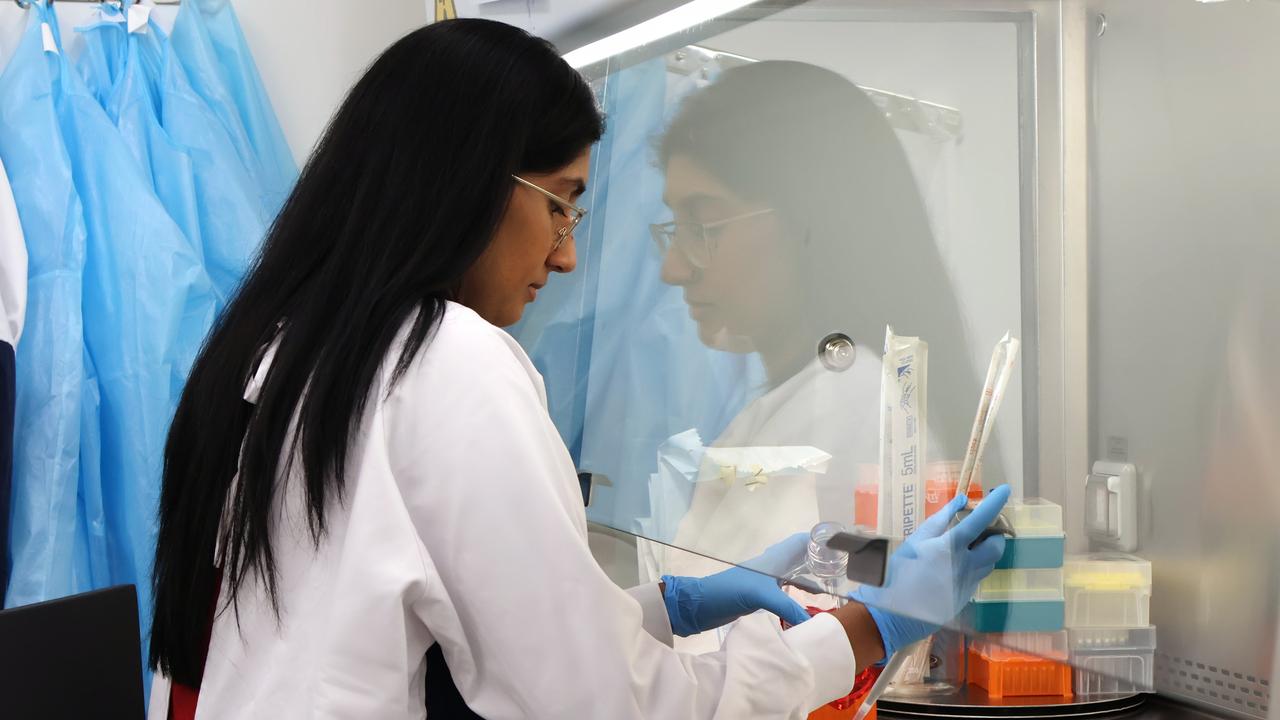Adelaide scientists make ‘massive’ breakthrough discovering on healing stubborn wounds
For more than a century, it only existed in theory. But now, SA scientists have made a “massive” breakthrough discovery on healing stubborn wounds.
SA News
Don't miss out on the headlines from SA News. Followed categories will be added to My News.
SAHMRI scientists have led the discovery a completely new type of cell with the potential to turbocharge tissue repair and heal stubborn wounds.
The heavily disguised healing cells could also be useful in transplants as they likely to avoid attention from the body’s immune system.
The cells, dubbed “EndoMac progenitors”, possess the ability to transform into two specific cell types of cells: endothelial cells which form blood vessels, and macrophages which are immune cells responsible for tissue repair and defence.
The discovery follows nine years of research and is being hailed as a world-first.
Dr Sanuri Liyanage from the SAHMRI research team noted cells with similar functions have been theorised to exist for more than a century however, until now, had never been found.
They were discovered in the outer layer of aortas in adult mice.

“These cells have an important job, to help grow blood vessels when the body calls for it,” Dr Liyanage said.
“They are activated by injury or poor blood flow, at which point they rapidly expand to aid in healing.”
The discovery, led by Professor Peter Psaltis from SAHMRI and the University of Adelaide, has been published in Nature Communications.
Ongoing research suggests the EndoMac progenitors could be used to boost healing in conditions like diabetes, where the body struggles to repair itself properly.
Crucially, these cells don’t express typical “self” markers, meaning they could be ideal candidates for stem cell transplantation as they are much less likely to be attacked by the recipient’s immune system.
Dr Liyanage and colleagues have isolated the cells from mice, grown them and observed them forming colonies.
These colonies have been tested in diabetic mouse models, showing remarkable improvements in wounds that normally would not heal.
“When we transplanted these progenitors into diabetic wounds, we saw a dramatic improvement in healing within days,” she said.
“In theory, this could become a game-changer for patients suffering from chronic wounds.”
The research team now is working on similar studies involving skin and muscle cells, with findings expected to be delivered in the next 12 months.
They are also searching for the cells in human tissue with promising indications.
“We’re excited to continue exploring the potential of these cells. It’s early days, but the implications could be massive,” Dr Liyanage said.
“This represents a significant advancement in our understanding of blood vessel regeneration and holds promise for creating more effective treatments that support the body’s capacity to heal and maintain function over time.”
This discovery was the result of a collaboration between researchers from SAHMRI, the University of Adelaide, the Baker Institute and La Trobe University.
Originally published as Adelaide scientists make ‘massive’ breakthrough discovering on healing stubborn wounds









